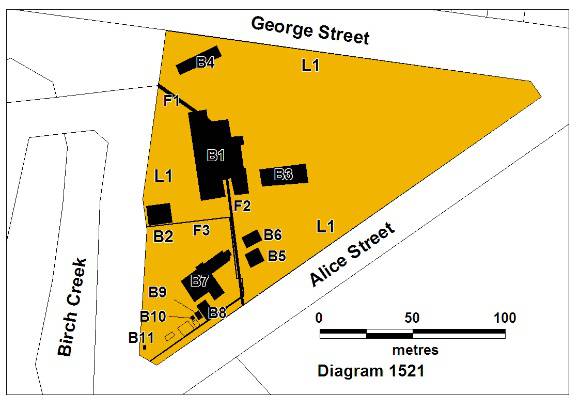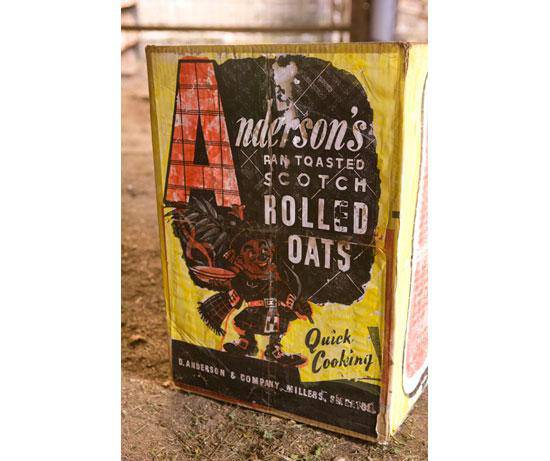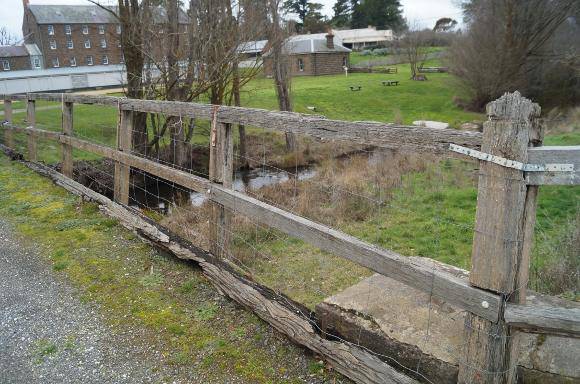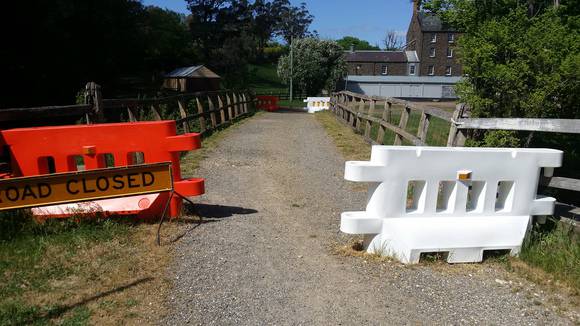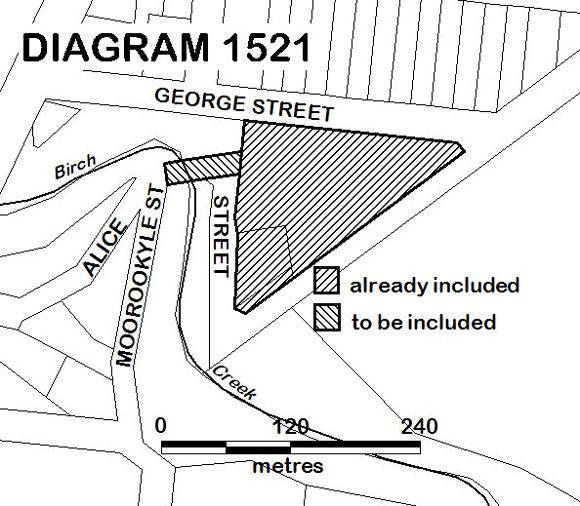| Back to search results » | Back to search page » |
|
ANDERSONS MILL COMPLEX
Statement of Significance
What is Significant? Anderson's Mill Complex, Smeaton, comprises a huge bluestone mill building, water wheel, 23 metre tall brick chimney, bluestone office, stables, granary, blacksmiths shop and residence. The complex was built for the Anderson brothers from 1861 onwards to service Creswick's prospering agricultural district. The ten bay bluestone mill building is four stories high with an attic storey in the gabled slate roof. The 28-foot (8.5 metre) diameter water wheel, built by Ballarat engineering firm Hunt and Opie, is fed by a mill race about 900 metres long which commences at a bluestone weir on Birch Creek. The industrial elements of the mill complex are located in a highly intact landscape setting which includes the Anderson family home and its garden, Birch Creek and the bridge on the access road and areas of European vegetation, all set within the context of the creek valley and surrounding farm land. The first part of the timber residence was built in the early 1860s with further additions in the nineteenth century including a separate bluestone kitchen block. The residence has a typical Victorian era cottage garden including berry gardens and a timber front boundary fence and gate to the mill area. The Anderson brothers migrated from Scotland in 1851, and were involved in goldmining at first before developing a thriving sawmilling business which serviced the gold mining industry. They were also involved into agriculture and land speculation. Their successes enabled them to make the large investment in the Mill. John Anderson had trained as a millwright in Scotland. Numerous flour mills were built in the established agricultural districts of Victoria in the 1850s and 60s. As with many mills from this period, the Smeaton mill's initial prosperity was short-lived as Victoria's drier northern areas, which were better suited to wheat growing, were developed for agriculture under the Selection Acts from the mid-1870s. In the same period the technology of wheat milling changed from stone to roller mills, and consumers came to prefer the product from the roller mills. David Anderson, one of the second generation of millers, invested in new roller milling equipment in 1895 and also diversified into oat-milling. The mill continued to operate for another sixty years as a flour and oatmeal mill before it closed in the late 1950s. Members of the Anderson family lived continuously in the residence on the site up until 2008. The Andersons Mill Complex, apart from the residence, was purchased by the State government in 1987 as a Bicentennial gift to the people of Victoria, and the land became a Historic Reserve which is now under the management of Parks Victoria. How is it Significant The Andersons Mill Complex is of historical, scientific (technical), and architectural significance to the State of Victoria. Why is it significant? The Andersons Mill Complex is of historical significance as highly intact and representative example of a rural industrial landscape associated with the early period of wheat growing activity in Victoria up until the mid-1870. Flour mills were an important component of the relatively self generating local economies which operated in the agricultural districts of Victoria in this period. The Andersons Mill Complex is of historical significance as a product of the development in a goldfields economy, in which money made from gold mining and associated industries such as timber milling was invested locally in other industries such as flour milling. The scale and finish of the mill and office indicate the confidence of the Andersons in this endeavour. The Andersons Mill Complex is of historical significance as a rural industrial complex which has been in continuous occupation and use by the same family since the 1860s. The buildings and structures are indicative of the transference of the Andersons' experience of building and industrial practices in Scotland. The different processes employed at the mill also demonstrate the capacity of the owners to adapt to changing circumstances over close to one hundred years. The bluestone main mill building of the Andersons Mill Complex is of architectural significance as a fine example of a large scale industrial structure displaying the simple unadorned materials, symmetrical arrangement and harmonious proportions of the Georgian style. The Andersons Mill Complex is of scientific (technical) significance as a rare and highly intact water powered nineteenth century flour mill. The waterwheel and the water turbine provide outstanding opportunities to demonstrate how water power was used in the nineteenth century. The Andersons Mill Complex is of scientific (technical) significance for its capacity to demonstrate the technical aspects of the oat milling process. The water wheel is of scientific (technical) significance as a product of the Victoria Foundry at Ballarat during its most active period. It clearly demonstrates the manufacturing capabilities and levels of craftsmanship attained by the foundry no more than five years after it was established. The wooden patterns from which the wheel's components were cast have survived and illustrate the way in which the wheel was manufactured.
Group
Manufacturing and Processing
Category
Mill (Grain)















